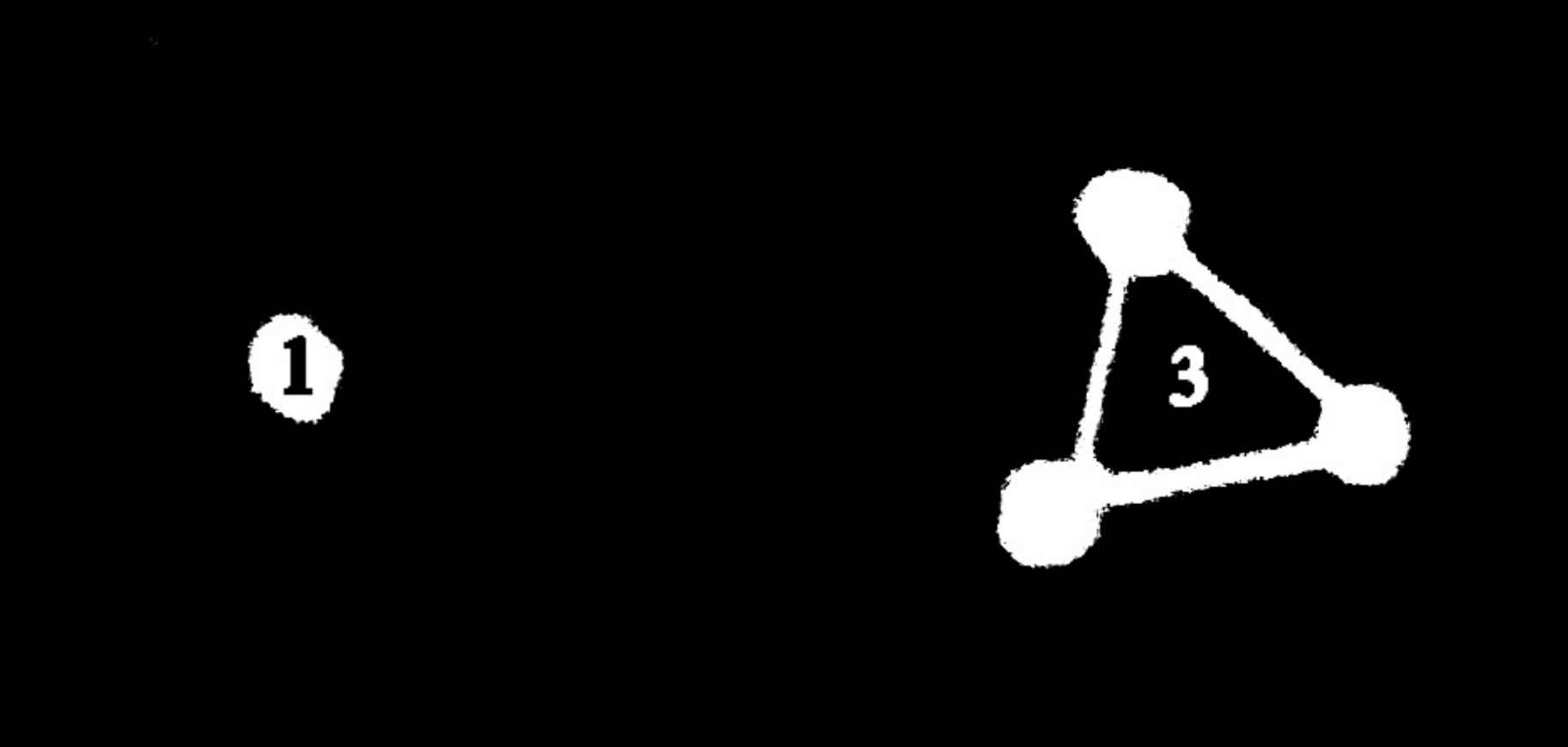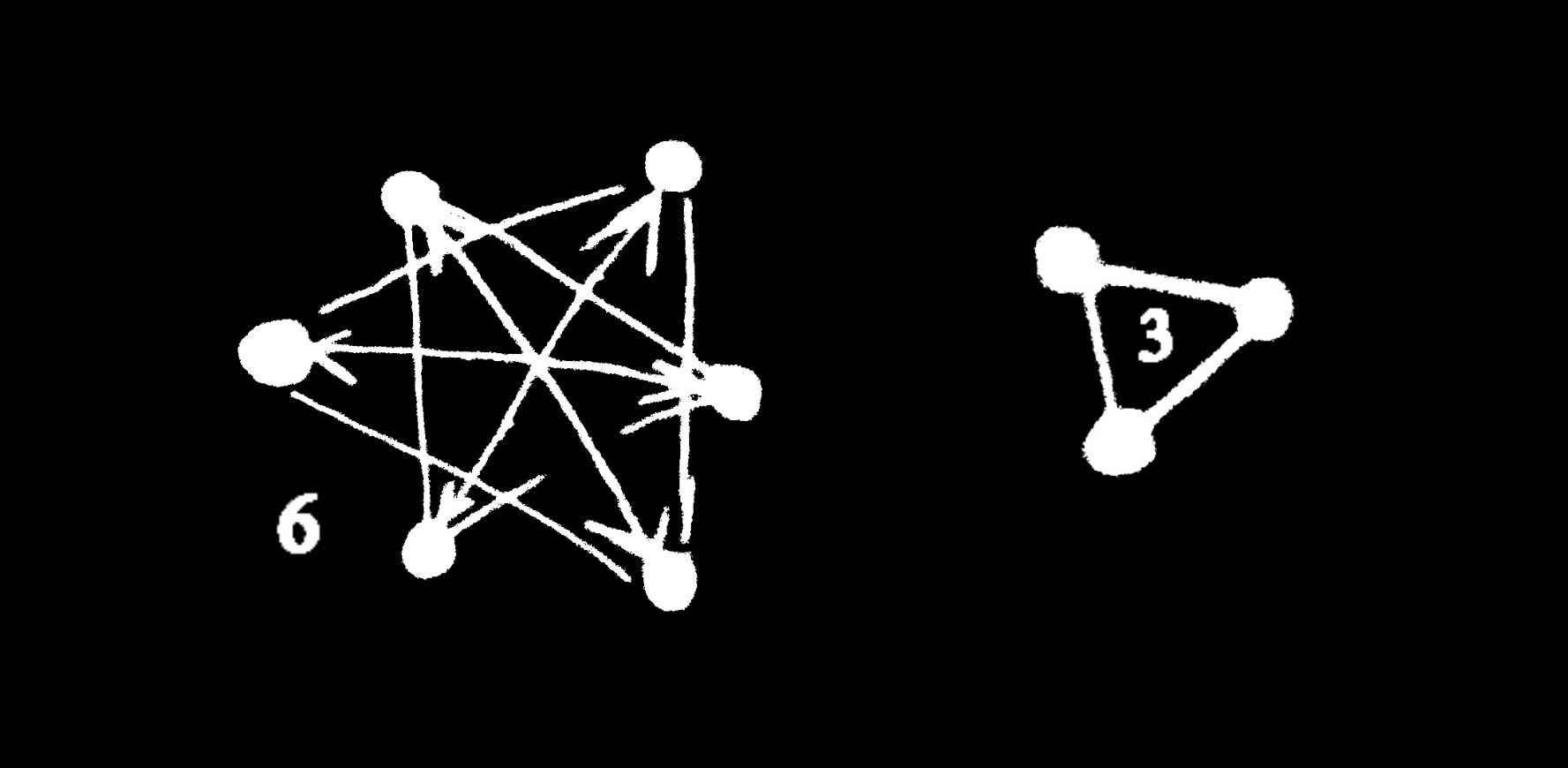

| [homepage] — [blogposts] — [contact-info] |
Nov. 3rd, 2024: Biblical Sacred Geometry ☩ ————— “All that diversity of natural things—which we find suited to different times and places—could arise from nothing but the ideas and wills of a Being necessarily existing.” —Sir I. Newton, Principia ————— ☩ In elaboration of the last part of one of this week’s posts, I want to establish and clarify my understanding of Biblical geometry—which is intimately linked with the Art of Gematria (a word which is itself a Talmudic fusion of “grammar” and “geometry”). We understand the Bible as a γραφὴ (graphé), that is, “scripture”, constituted with elementary “letters”, γράμματα (grammata). Each particular letter complicates with others into “words”—which are, essentiallly, “compounds” or complicated grammatical “organisms”. We can understand the Art of Gematria as working according to “chymical” principles—consisting with the measuring and identifying of principal words (or specific, complicated numerical values) as elaborate, and yet unique, forms of typical cohesion. (Nevertheless, today I am only going to focus on the most “basic” numerics, and their fundamental principles, in accord with a systematic Biblical perspective.) ☩ ——————————————Grammatical Singularities— The first number is One. Where does number 1 appear in the Bible? Now take note, that the first number, One, is typified Biblically by the sign of the “Stone”, the אבן. This sign, אבן, is typically presented as a singular being, and yet, represents the Unity of the Trinity. For example: In Genesis 29, Jacob approaches a singular stone, which is assumed with three flocks (Gen. 29:2). The rabbinic sages elaborate the implicit trinitarian nature of the Stone, as its spelling (אבן, Ewwen) is understood by Rashi to be a compound of “Father” (אב [Aww]) and “Son” (בן [Ben]). And, naturally, the relation of the Father to the Son is itself a third particular, producing a Trinity. 
(Accordingly, we understand One & Three as numerically typifying Singularity and Unity.) It is traditionally understood that Unity qualifies all “Odd Numbers”. For example: It stands that “Seven Eyes” were upon the Stone (Zech. 3:9). Seven—being an odd number—typifies the unity and singularity of the “Eyes”; and surely it is understood that the “Eye” with its function of “seeing” represents the passive state of the divine mind, as it’s written: וראה ועשה, “...look & make” (Exo. 25:40)—observe, & then act; but the observation comes first, and passes to action.
Take note—it stands written: “In The Beggining God created the Heavens and the Earth” (Gen. 1:1). The extended forms here are two: Heavens & Earth. We may thereby understand the primitive structure of Creation as a one-dimensional line extending between those two focalities. And so the number 2 is typifying the elaboration of the space-less Point along a one-dimensional space. Additionally, this created world extends throughout a two-dimensional surface, crossing the aforementioned line out: along Four Cardinal Points, toward which the singularity develops. 
Thereby we have established the numbers Two and Four as typifying the world’s vertical and horizontal extensions, along three dimensions, which now altogether produce the number Six. 
All those numbers (2, 4, & 6) are even, and signify the multiplicity of directions through-out which a bodily form extends. |